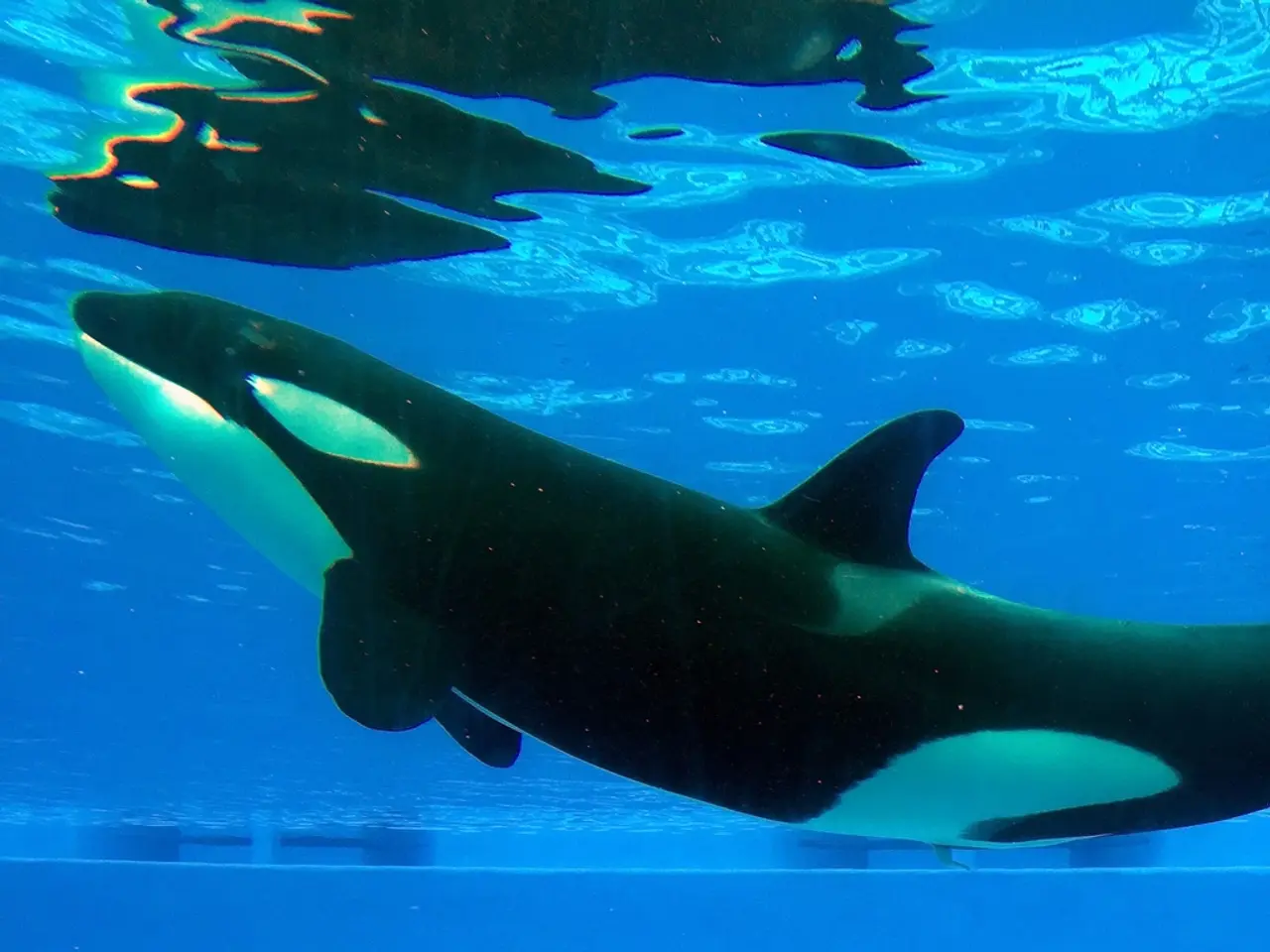Oceanic Treasure: The Abundance of Whale Urine in the Sea
New findings published in the journal Nature Communications reveal that whales are playing a significant role in the ocean's nutrient cycle, particularly around their breeding grounds.
During migration and breeding season, whales live off their blubber and discard extra water and nutrients in their urine. This urine becomes the largest source of nitrogen in their breeding waters.
The amount of nitrogen whales move in their urine is surprising. To estimate this, researchers looked to data on elephant seals, another marine mammal that fasts before breeding, to gauge the amount of nitrogen whales shed in their urine.
The extra nitrogen from whale urine feeds phytoplankton in the ocean. Phytoplankton, tiny ocean organisms, absorb carbon dioxide, a greenhouse gas, as they grow. This process helps reduce the amount of carbon dioxide in the atmosphere.
The researchers focused on three types of whales for their study: gray, humpback, and right whales. These whales bring nearly 4,000 metric tons of nitrogen per year to their breeding grounds around Hawaii.
The study shows the "remarkable contribution" whales make to their ocean ecosystems. Whales often move nutrients from deeper water to near the surface through their activities. This nutrient-rich water supports a diverse range of marine life.
Historically, migrating whales may have moved three times as much nitrogen before commercial whaling. The study further emphasizes the value of large animals within their ecosystems. Roman, a marine ecologist, emphasizes that animals play a crucial role in "building the planet around us."
The researchers looked up historic accounts and data on whale sightings to determine how many whales there are and where they travel. The findings suggest that whales, despite their declining numbers, still play a vital role in maintaining the health of our oceans.








